
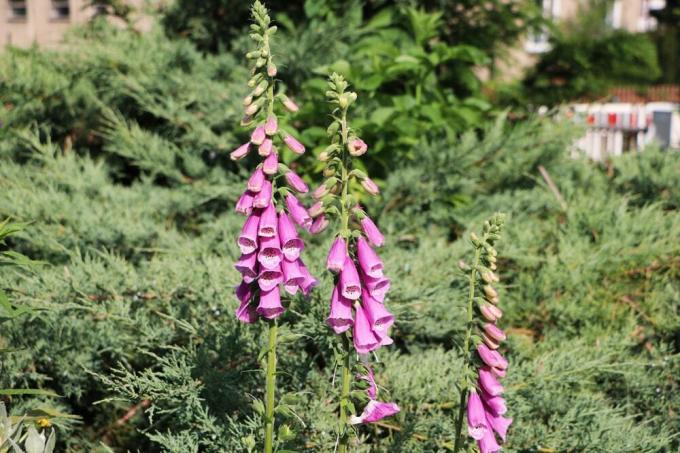
Table of contents
- What colors are there?
- Forest flowers in white
- Forest flowers in greenish tones
- Forest flowers in blue and purple
- Forest flowers in reddish colors
- Forest flowers in yellow
- Multicolored forest flowers
- Habitat of forest flowers
- Protected Plants
- Popular forest flowers
Germany is located in the temperate climate zone of Europe and has a rich variety of flora that adorn forests and meadows with a real play of colours. The forest flowers in the local areas provide a unique view of the diversity offered by nature. If you are interested in the forest flowers of Germany, you can easily recognize them by their bright colors.
What colors are there?
Anyone who spent part of their childhood in the forest will have no problem identifying many of the flowers that can be found in the undergrowth and at the edge of the forest. The German flora focuses on a small selection of colors that are original and, in contrast to tropical plants, appear rather simple. Forest flowers bloom in the following shades:
- white
- greenish
- blue and violet
- reddish
- yellow
- multicolored
Tip:
When identifying a flower, don't just look at the colour. Patterns on the leaves, the shape of the flowers and the growth provide further information about which plant it could be.
Forest flowers in white
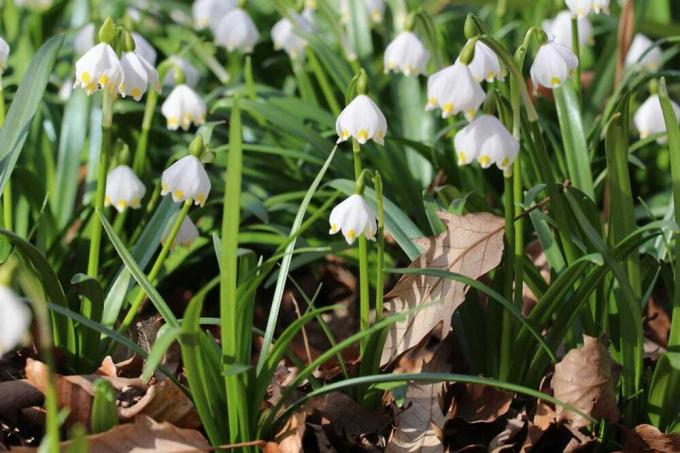
The local forests have a tendency to white blossoms, stretching towards the sun between the green undergrowth to greet hikers and nature lovers with their floral decoration. In addition to the yellow flowers, they form the most extensive group and enjoy great popularity due to their coloring. What is striking about the white forest flowers are the numerous blossoms, which come in a wide variety of colors Find forms on the plants and from magnificent umbels to panicles, as with the foam flowers. They stand out very well from their green leaves and are very popular as hair accessories. Some of the species, including lily of the valley, woodruff and wild garlic, are among the most well-known plants that are mainly found in spring. The woodruff is even one of the first plants that can be found in the forest in spring and has been used by humans for thousands of years.
The following forest flowers bloom in white:
- goutweed (Aegopodium podagraria)
- garlic mustard (Alliaria petiolata)
- wild garlic (Allium ursinum)
- wood anemone (Anemone nemorosa)
- Forest bittercress (Cardamine flexuosa)
- Meadow bittercress (Cardamine pratensis)
- lily of the valley (Convallaria majalis)
- forest strawberry (Fragaria vesca)
- wood sorrel (Oxalis acetosella)
- forest goat's beard (Aruncus dioicus)
- Immenblatt (Melittis melissophyllum)
- woodruff (Galium odoratum)
- Little burnet (Pimpinella saxifraga)
- foam flowers (Tiarella)
- Great witch herb (Circaea lutetiana)
- March mug (Leucojum vernum)
Forest flowers in greenish tones

The number of flowers in greenish hues is kept extremely low, as flowers prefer bright colors to attract bees and other pollinators. Not so with these three species, which, compared to the other plants, have a light green coloring that often still combines yellow elements. The change-leaved spleenwort in particular has an intense green tone that even appears golden or yellowish in different light spectrums. On the other hand, the genuine Solomon's seal with the downward-hanging flowers in an extremely pale shade of green, almost white, is numerous and attracts many people because of its scent. But you have to be careful here, because Solomon's seal is poisonous and can lead to a variety of symptoms. In Russia, for example, it was used as an emetic. That's why you should look at this flower from a safe distance. The sage germander is mainly found in sparse forests and is more widespread in southern Germany.
- Alternate-leaf Spleenwort (Chrysosplenium alternifolium)
- Genuine Solomon's Seal (Polygonatum odoratum)
- Sage Germander (Teucrium scorodonia)
Forest flowers in blue and purple
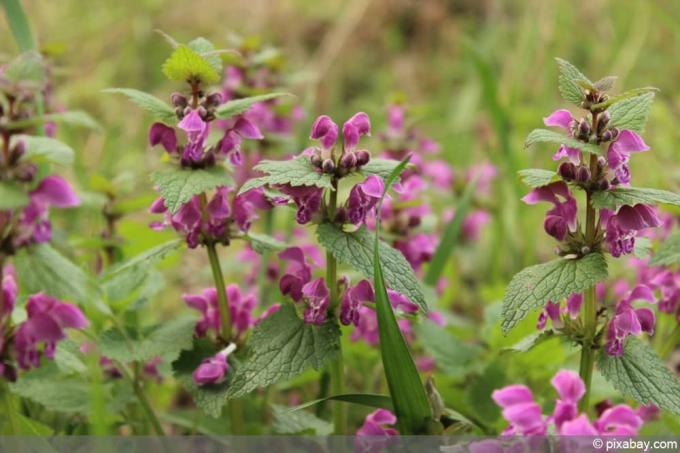
With blue and purple forest flowers, it is often difficult to define whether the flower is blue or purple. When it's not obvious like sweet violet or liverwort, it's very easy to confuse the different species. The European cyclamen is one of the most poisonous flowers that you can find in the Alps. It is protected in Bavaria and should never be picked yourself as the effects can be life-threatening. The spotted lungwort is an old medicinal herb and is often plowed and given away because of its flower shape, which resembles a calyx, and its intense colour. Blue and purple woodland flowers are visible in the woods within moments and they are often of the species that thrive in partial shade or shade. Of course, the sweet violet should not be forgotten here, which was already consecrated to deities in ancient times, as it has an extremely intense scent that has made it a love flower.
- Spotted Lungwort (Pulmonaria officinalis)
- Sweet Violet (Viola odorata)
- Forest Cranesbill (Geranium sylvaticum)
- crawling bugle (Ajuga reptans)
- ground ivy (Glechoma hederacea)
- Marsh Skullcap (Scutellaria galericulata)
- Germander Speedwell (Veronica chamaedrys)
- purple orchid (Orchis purpurea)
- Hollow larkspur (Corydalis cava)
- liverwort (Anemone hepatica)
- European cyclamen (Cyclamen purpurascens)
Forest flowers in reddish colors
Flowers in reddish tones can be seen from afar by their blossoms, which, like the foxglove, can be found on a shoot that stretches upwards away from the leaves. It is the most common foxglove species in Europe and also an extremely poisonous plant, with all parts of the plant being poisonous. Nevertheless, because of its red, almost violet color, it attracts many enthusiasts who photograph the plant. The narrow-leaved willowherb is one of the best-known reddish forest flowers.
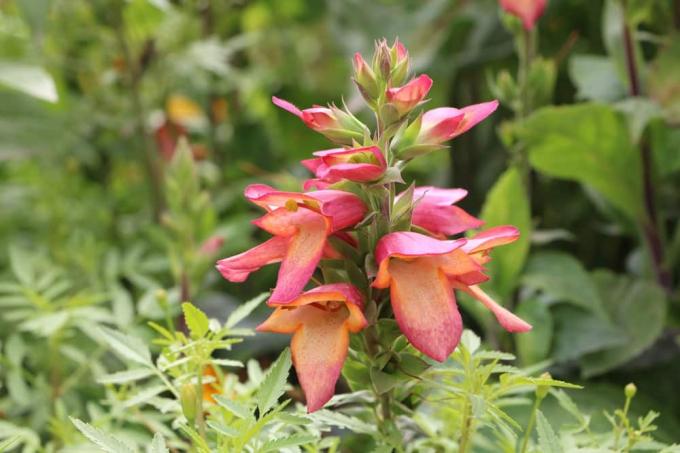
Through the plant, in the 18th In the 19th century the German botanist Christian Konrad Sprengel observed the concept of cross-pollination, which led to a better understanding of the entire plant world. The beetle is the only representative of this genus and has chosen a location in deciduous forests with precious woods. The beetle is popular because of its sweet scent, which attracts bees and bumblebees in particular. They even smell like honey.
- Red Foxglove (digitalis purpurea)
- True comfrey (Symphytum officinale)
- Red campion (Silene dioica)
- Immenblatt (Melittis melissophyllum)
- Narrow-leaved willowherb (Chamerion angustifolium)
- Purple Deadnettle (Lamium purpureum)
Forest flowers in yellow
It appears yellow in the forest. Yellow flowers are probably one of the most species-rich group when it comes to colored flowers that can be found in the forest. During a walk in the forest, it is worth looking at trees, under ferns and other corners of the forest, because some of these specimens may be hiding here. The following forest flowers are all found in German forests and many of them are very popular and well known to everyone. The best example here are the cowslips, which can be found in several species in the forests, above all the cowslip.

It is a so-called herald of spring and can be found as early as March in alluvial forests and the edges of streams that run through these forests. Of course, the forest gold star should not be forgotten here either, which draws attention to itself with its bright flowers. Another representative of this category are the popular yellow anemones, which, like the wood anemones, attract attention with their large petals.
- Real cowslip (Primula veris)
- Tall Cowslip (Primula elatior)
- Gold Ranunculus (Ranunculus auricomus)
- Yellow anemone (Anemone ranunculoides)
- Forest Yellowstar (Gagea lutea)
- celandine (Chelidonium majus)
- grove lettuce (Aposeris)
- Spurge Family (Euphorbiaceae)
- Little balsam (Impatiens parviflora)
- Great balsam (Impatiens noli-tangere)
- Meadow quail wheat (Melampyrum pratense)
- Common loosestrife (Lysimachia vulgaris)
- Pennywort (Lysimachia nummularia)
- gold nettle (Lamium galeobdolon)
- Forest Hawkweed (Hieracium murorum)
- True clove root (geum urbanum)
- Figroot (Ficaria verna)
- marsh marigold (Caltha palustris)
- Yellow Violet (Viola biflora)
Multicolored forest flowers
Helleborus is one of the few forest flowers that offers itself in multiple colors and does not have a primary tone. Helleborus is also known by the names Hellebore and Snow Roses and this rooster family is found from Europe to Asia. They stand out due to their quite large leaves and also have five petals ranging from red to purple to white and green. The Christmas rose, another name for Helleborus, occurs in these numerous shades and also in other species that can be found in Germany and Europe. Also among the multicolored flowers is the lovely pixie flower, Epimedium. The Barberry family immediately catches the eye with their uniquely shaped buds, which curve into an elegant shape and look truly amazing.
Habitat of forest flowers
The native forest flowers are all distributed among the forests, which are mainly found in Central Europe and the Alps. Because of their multitude, every walk in summer and spring is marked by the aromas and colors of these Plants that are not only used in medicine and the kitchen, but also inspire artists of all eras have. If you are looking for a specific flower, it is worth researching the necessary information about the preferred location beforehand. Some flowers are only found near water and deciduous forests, while foxglove, for example, thrives particularly well in newly planted coniferous forests. However, if you are not sure which of these plants you are looking for, it is worth simply going into nature and looking for interesting specimens along the forest paths. By choosing the right color, the necessary information about the plant is easy to find.
Protected Plants
Before you pick one of the forest flowers, you should be aware of whether this flower is under protection. Many of the above species are controlled and are either on the endangered species list or are protected for other reasons. Wild garlic is one of those plants that shouldn't be picked just like that. Whether you want to hang the flower as a spice or to dry, this is not allowed.
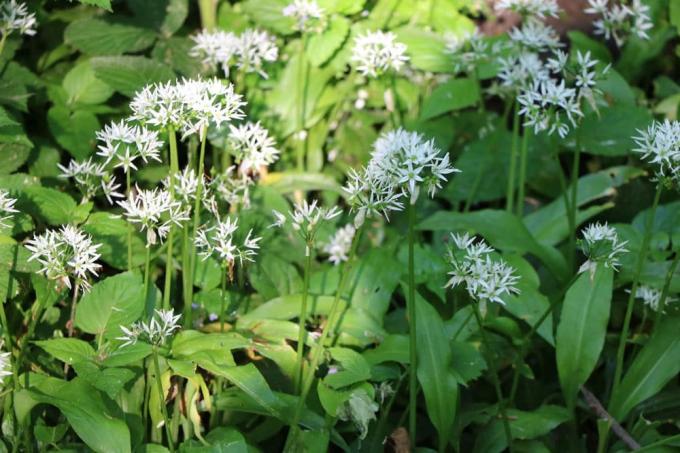
If the plant is not a herb and is only used for decoration, you can only pick a small bouquet that fits between your thumb and forefinger. This prevents large quantities of plants from simply being stolen, as they usually provide a basis for bees, insects, birds and mammals in some form. Be careful not to pick flowers in national parks. There is always a ban on picking plants and even if the temptation is great, it can lead to legal problems.
Popular forest flowers
Violets are among the most popular forest flowers. Due to their numerous species with an intense scent, they are often brought into your own garden and delight as soon as they are discovered along the way. In addition to the violets, the cowslips, which everyone probably knows from childhood, are also inspiring. They have a high proportion of ingredients that have a positive effect on health. The spring snowflake is well-known throughout Germany thanks to its other name, Märzenbecher. This flower is found in many mixed and alluvial forests and is also protected and poisonous. It is noticeable in early spring and often breaks out from under the snow cover to stretch out towards the new sun.
 garden editorial
garden editorial I write about everything that interests me in my garden.
Learn more about grooming

send plants | 7 tips for sending flowers
Sending plants requires good preparation. Not only the type of packaging is of great importance, so that the goods arrive safely at their destination. The season is also important. It depends on how well the plants survive the transport.

30 office plants for a better indoor climate
A bit of green in the office not only looks pretty, but can also significantly improve the indoor climate. For example, indoor plants increase humidity, can clean the air and, if they are large enough, even dampen noise.
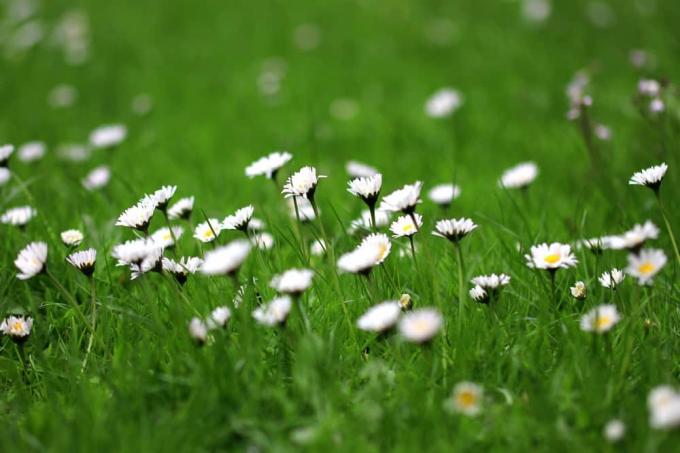
21 edible flowers | What flowers can you eat?
Edible flowers can be used for many dishes in the kitchen, not just as decoration. The flavors range from sugary-sweet to peppery-spicy and give food and drinks a very special touch.
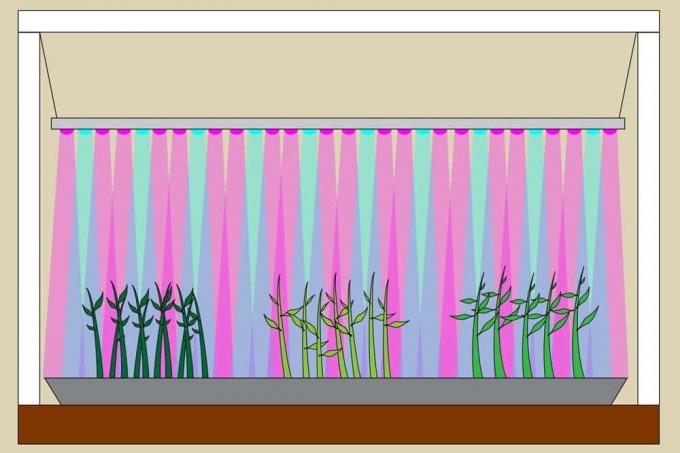
Everything about LED plant lights: Build plant lights yourself
Plants need light. In the absence of it, they suffer or perish. Sometimes, conventional daylight just isn't enough to meet a plant's light needs. Then LED plant lighting can help. How to build such a plant light yourself is here.

Shade plants: 17 green and flowering plants for the shade
Shady garden areas are a challenge for every hobby gardener, although shade does not mean that it is completely dark. Partial shadow and light shadow are also a type of shadow. The range of suitable plants is growing steadily and offers a variety of design options.

Scented plants: list from A-Z for garden, apartment and balcony
Flowers, bushes and trees not only set color accents in the garden or inspire with their magnificent growth, they spoil the nose with their scent. Humans have always been attracted to fragrant plants and kept them close by.



